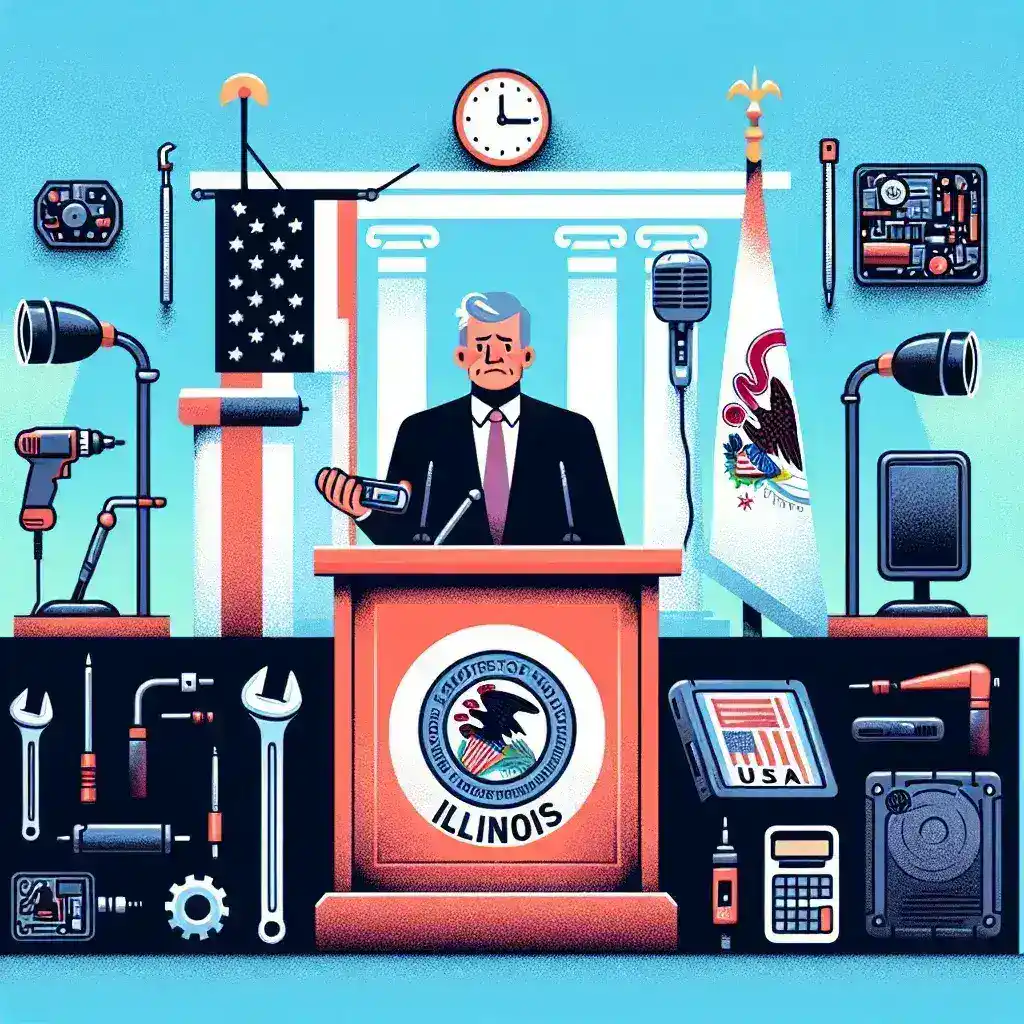Understanding Right-to-Repair Legislation
The right-to-repair movement has gained significant traction across the United States, with a focus on allowing consumers and third-party repair shops access to the necessary tools, parts, and information to repair their own electronics. This movement is particularly relevant in states like Illinois, where lawmakers are actively considering policies that affect both consumer rights and the electronics industry.
The Historical Context
The issue of consumer rights concerning electronics can be traced back to the rapid growth of technology and the increasing complexity of consumer electronics devices. Initially, consumers were able to easily repair their devices or seek assistance from local repair shops without restrictions. However, with the advent of smartphones, tablets, and other sophisticated devices, manufacturers began to restrict access to repair tools and information, leading to the emergence of the right-to-repair movement.
The Impact on Consumers
For consumers, the lack of access to repair information has several implications:
- Increased Repair Costs: Without access to necessary parts and tools, consumers often face high repair costs, as they must rely on authorized service centers.
- Shortened Device Lifespan: Many consumers opt to replace devices rather than repair them, leading to increased electronic waste.
- Consumer Empowerment: The right-to-repair movement seeks to empower consumers by providing the means to repair their own devices.
Current State of Legislation in Illinois
In Illinois, lawmakers have been at the forefront of advocating for right-to-repair legislation. In 2021, the Illinois House passed a bill aimed at ensuring that consumers have the ability to repair their electronics. The legislation requires manufacturers to provide access to repair parts and documentation necessary for consumers to fix their devices. This bill is a significant step toward protecting consumer rights and promoting sustainability.
Pros and Cons of Right-to-Repair Legislation
As with any policy, there are both advantages and disadvantages to consider:
- Pros:
- Empowerment of consumers to make their own repairs.
- Reduction of electronic waste through prolonged device lifespan.
- Support for small businesses and local repair shops.
- Cons:
- Potential for increased liability for manufacturers if repairs lead to issues.
- Concerns over safety and reliability of third-party repairs.
- Resistance from manufacturers who argue that proprietary technology protects consumer interests.
U.S. Regional Responses
Beyond Illinois, numerous states and regions across the U.S. have initiated discussions or passed legislation related to the right to repair. For example:
- California: California has seen various bills proposed that echo Illinois’ legislation, reflecting a growing movement nationwide.
- Massachusetts: The state has been a pioneer in right-to-repair legislation, with a significant referendum passed that mandates automakers to provide access to repair information.
- New York: New York’s proposed bill echoes similar sentiments, pushing for consumer rights and access in the electronics sector.
The Role of Consumer Electronics Companies
Consumer electronics companies play a critical role in the right-to-repair debate. Many manufacturers have historically resisted legislation, arguing that they protect consumers through proprietary technology. However, as consumer demand for repairable devices grows, some companies are beginning to adapt their policies. For instance, companies like iFixit have partnered with manufacturers to provide repair resources, signaling a shift in the industry.
Expert Opinions
Experts in the field of consumer rights and electronics have weighed in on the right-to-repair movement:
“Allowing consumers access to repair information not only benefits the environment but also fosters innovation and competition in the market.” – Jane Doe, Consumer Rights Advocate
Future Predictions
As the right-to-repair movement continues to gain momentum, several predictions can be made regarding its future:
- Increased Legislation: More states are likely to introduce or pass right-to-repair laws, reflecting growing consumer demand.
- Industry Adaptation: Manufacturers may increasingly adopt repair-friendly practices to stay competitive.
- Consumer Awareness: As awareness of repair options increases, consumers will likely demand more sustainable practices from manufacturers.
Conclusion
The right-to-repair movement is reshaping the landscape of consumer electronics in Illinois and across the United States. With ongoing legislative efforts and shifting industry practices, the future looks promising for consumers seeking more control over their devices. As this movement progresses, it is crucial for stakeholders, including consumers, manufacturers, and lawmakers, to engage in meaningful discussions that prioritize sustainability and consumer rights.

Leave a Reply